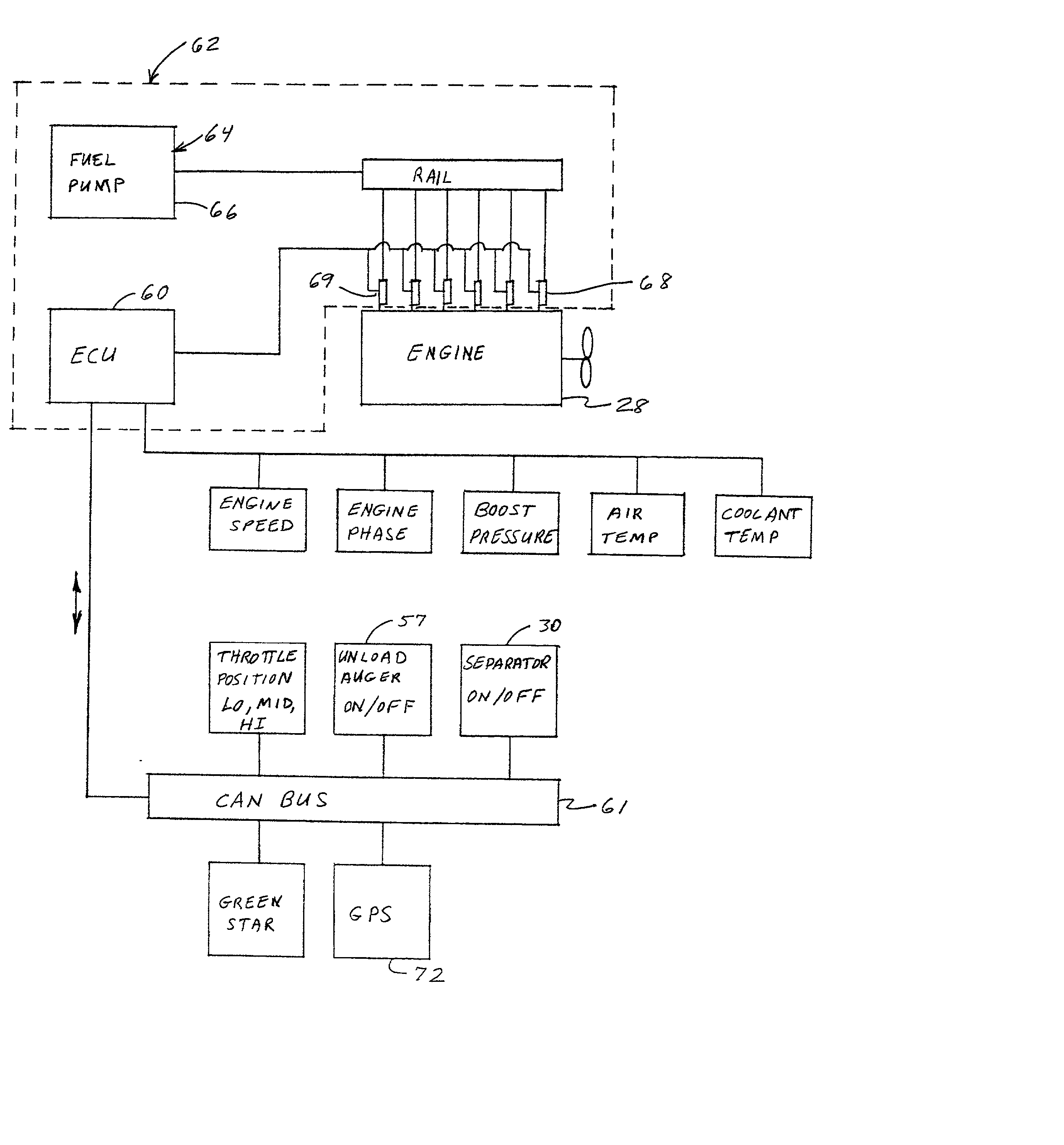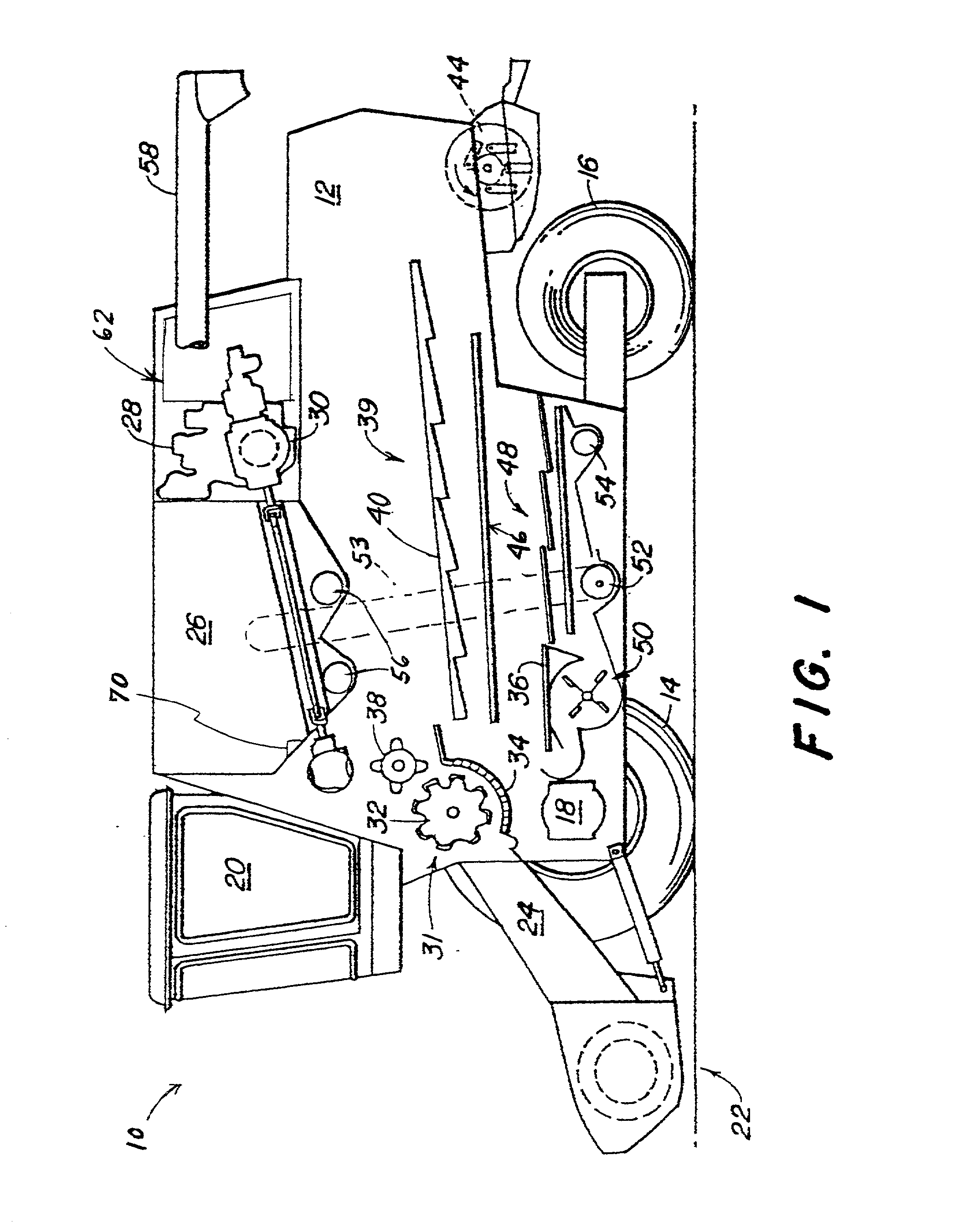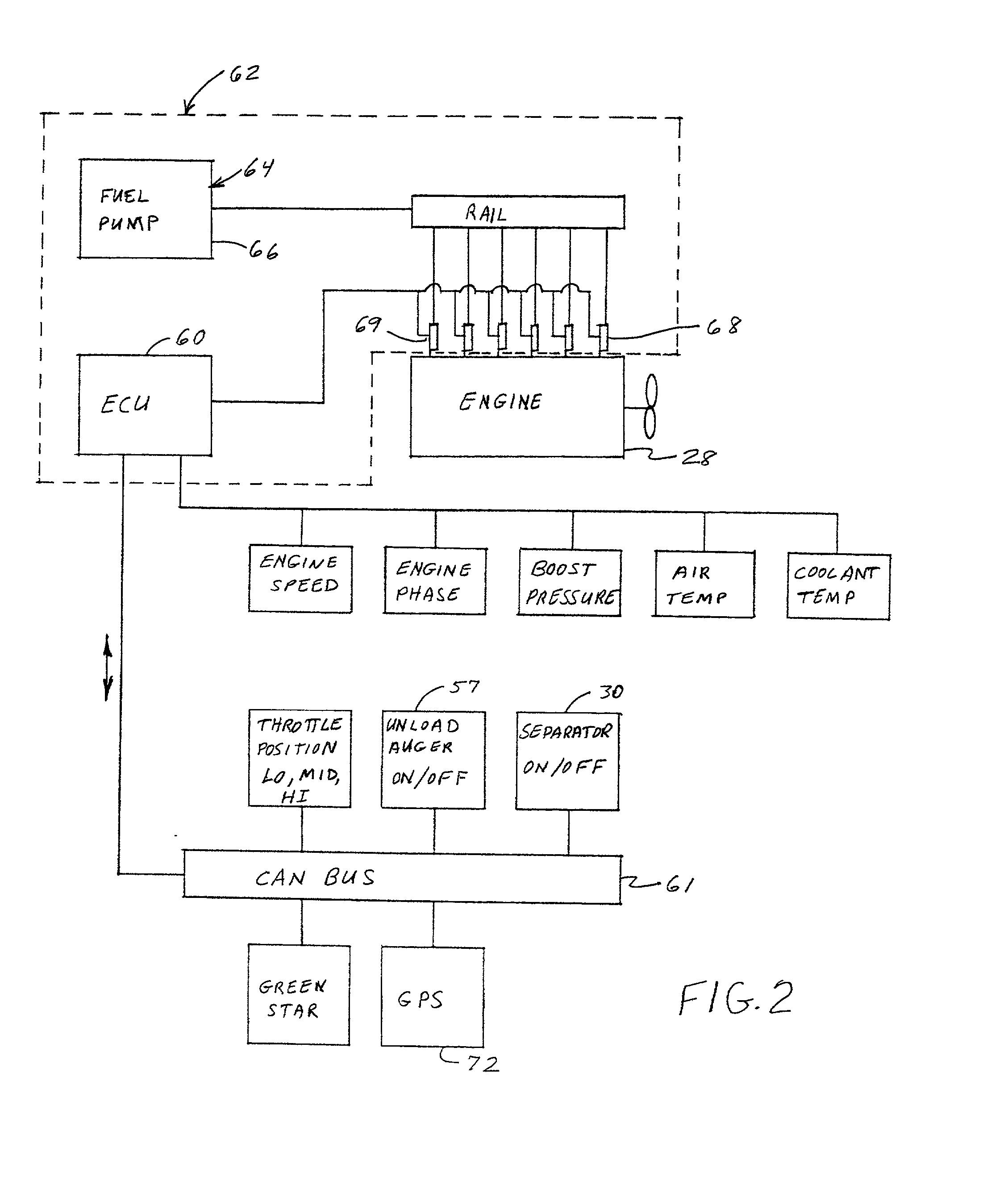Vehicle engine control
a technology for engine control and vehicles, applied in the direction of electric control, speed sensing governors, machines/engines, etc., can solve the problems of engine overload, constant varying load demand on the engine and engine drive train, and substantial decrease in engine speed before the engine control uni
- Summary
- Abstract
- Description
- Claims
- Application Information
AI Technical Summary
Benefits of technology
Problems solved by technology
Method used
Image
Examples
Embodiment Construction
[0044] FIG. 1 illustrates an agricultural combine 10 having a chassis 12 and ground engaging wheels 14 and 16. Forward ground engaging wheels 14 are driven by hydrostatic motor 18 located between the wheels. An operator seated in operator control cab 20 controls the operation of the combine. Harvesting platform 22 extends forward from the chassis and is used for severing the crop material from plants in the field which produce such crop material, and for ingesting the so-severed crop material into the combine. After the crop material is ingested into the combine, the crop material is directed through feeder house 24 and into those portions of the combine which separate the crop material from unwanted portions of crop residue such as plant material other than the crop material, and weeds.
[0045] While the invention is described herein in terms of harvesting grain, it should be understood that the invention can apply equally well to implementations employing other vehicles or wherein c...
PUM
 Login to View More
Login to View More Abstract
Description
Claims
Application Information
 Login to View More
Login to View More - R&D
- Intellectual Property
- Life Sciences
- Materials
- Tech Scout
- Unparalleled Data Quality
- Higher Quality Content
- 60% Fewer Hallucinations
Browse by: Latest US Patents, China's latest patents, Technical Efficacy Thesaurus, Application Domain, Technology Topic, Popular Technical Reports.
© 2025 PatSnap. All rights reserved.Legal|Privacy policy|Modern Slavery Act Transparency Statement|Sitemap|About US| Contact US: help@patsnap.com



